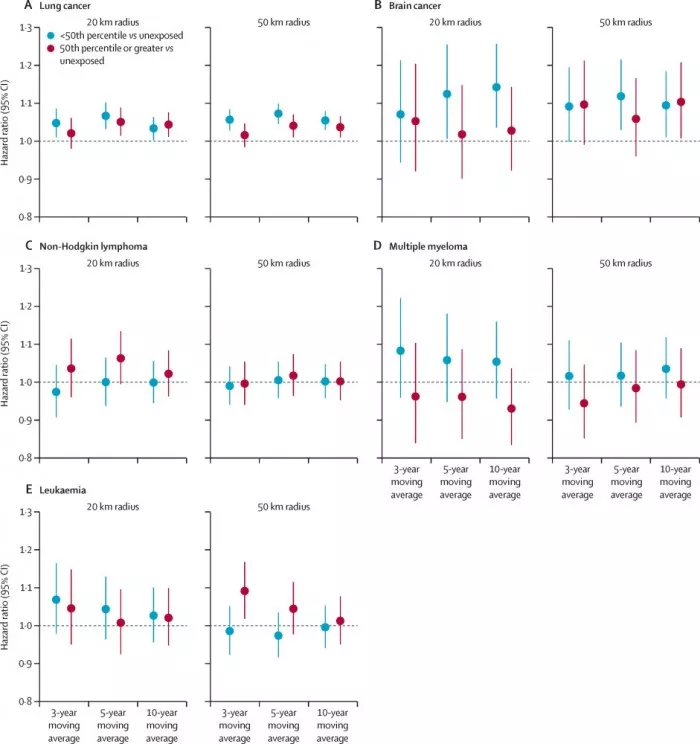Researchers at McGill University conducted the first study to investigate the relationship between certain cancers and people living near wildfires, new atlas reported The results show that people living within 50 kilometers (31 miles) of wildfires in the past 10 years have a higher incidence rate of brain tumors and lung cancer

The acute health effects of exposure to wildfires are well known. It is reported that during the wildfire, the air quality drops sharply, and the incidence rate of asthma and cardiovascular disease is high. After a big wildfire, we often see some adverse pregnancy results.
But little is known about the long-term health effects of exposure to these events. The new study fills this knowledge gap by studying the health data of about 2 million people in Canada over a period of 20 years.
The study investigated people living within 20 kilometers (12 miles) and 50 kilometers of wildfires, and then studied the incidence rate of certain cancers over the next 10 years. Compared with those who had not been exposed to wildfires, the study found that those who lived within 50km of wildfires had a 4.9% higher incidence rate and a 10% higher incidence rate of brain tumors. These higher cancer rates were similar in people with a 20 km radius and in people with a 50 km radius.

"Wildfires often occur in the same location every year, but we know very little about the long-term health effects of these events," said Scott weichenthal, one of the authors of the new study. "Our research suggests that living near wildfires may increase the risk of some cancers."
The researchers cautioned that the findings were observational and did not indicate a specific causal relationship. Because this is the first study to investigate the potential long-term link between wildfire exposure and cancer risk, much work needs to be done to understand what drives this link.
Studies have shown that wildfires may increase the risk of cancer in surrounding populations in many ways, in addition to exposure to smoke in the days and weeks after a fire. For example, in the months and years after the wildfire, soil and water pollution have been found. This pollution may include heavy metals and other volatile organic compounds.

"In addition, there are concerns that wildfire derived pollutants will remain in the indoor environment for a long time, but few studies have studied this problem. One study reported that carbon concentrations can be detected in wipe samples collected from homes three to eight months after a major wildfire in New Mexico," the researchers said in a new study
This study also has many limitations, which need further research to solve. For example, the study found that the increase in cancer risk was similar in people with low and high wildfire exposure.

The researchers suggest that the characteristics of different wildfire exposures will need to be clarified in further studies. Perhaps some wildfires expose populations to more dangerous pollutants. Other questions remain unanswered. For example, what are the health effects of a large, single wildfire compared to people exposed to several smaller wildfires over the years?
Nevertheless, these findings are novel, and given the increased incidence of wildfires around the world caused by climate change, the researchers point out that understanding the long-term health effects of these events is of global urgency.
"... given the limitations of the study and because this is the first epidemiological study to investigate the relationship between wildfire and cancer risk, we emphasize that causality cannot be determined from this single study," the researchers reiterated in their conclusions on the study. "Further work is needed to refine exposure indicators used to estimate the chronic health effects of wildfires and replicate them in different geographical locations and populations."
The new study was published in the lancet planet health( https://www.thelancet.com/journals/lanplh/article/PIIS2542-5196 (22) 00067-5 / fulltext).